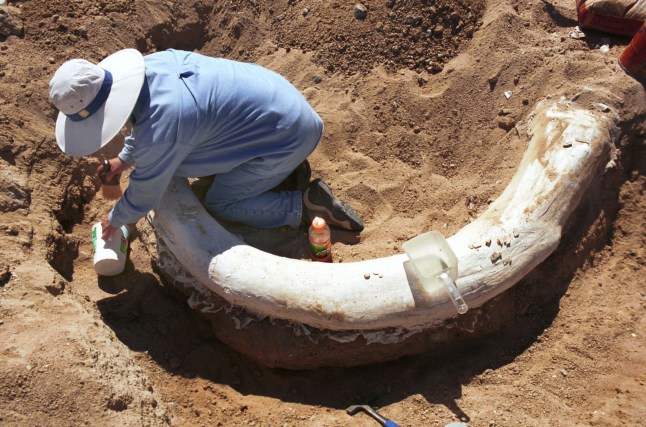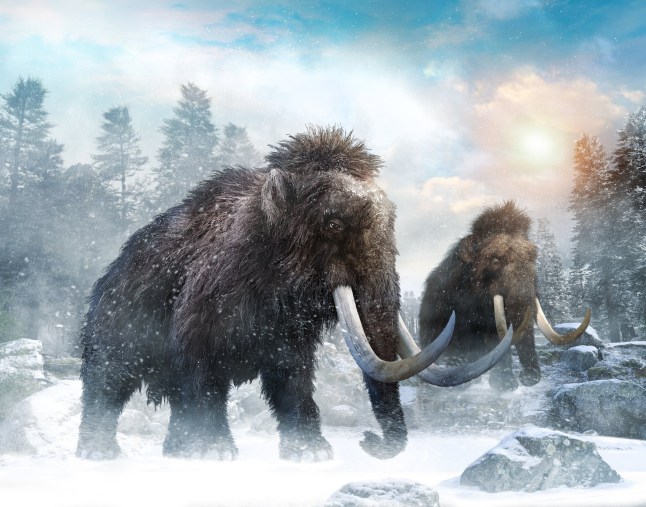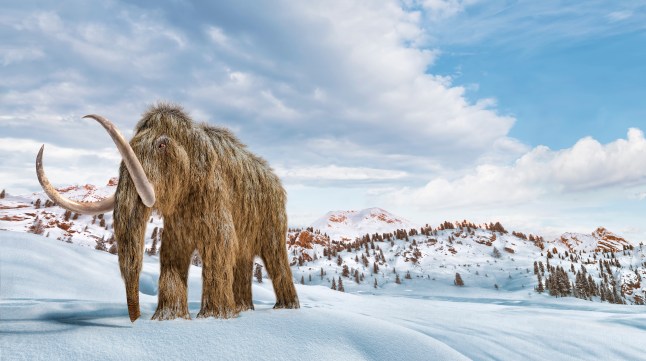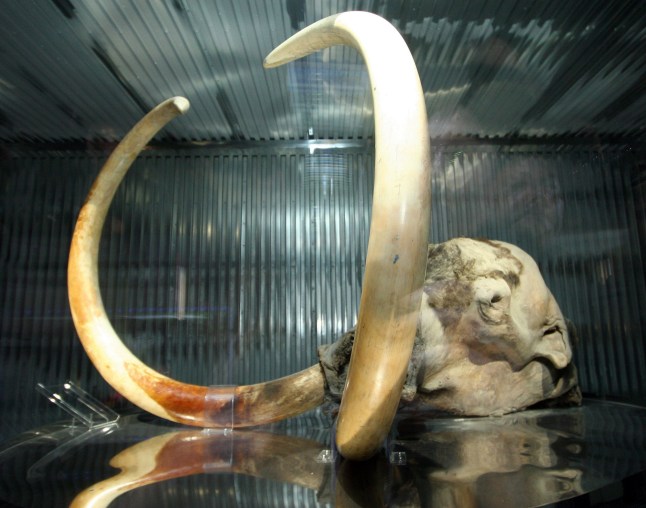
Should we be worried about ancient frozen mammals? (Picture: Getty)
The researchers and filmmakers had no idea they were looking at ‘mammothpox’ when they all suddenly fell ill.
The novel virus was wriggling around a well-preserved wool mammoth specimen from thawing permafrost,permanently frozen ground.
While analysing tissue samples,the team members began falling ill one after the other with symptoms akin to Mpox or smallpox.
They knew that the virus would spread – fast – and another pandemic was a strong possibility.
Don’t worry,you’re not going to catch a virus that makes you grow fur and a trunk anytime soon.
‘Mammothpox’ is the name of a fictional virus that the World Health Organization (WHO) used to test how prepared 15 countries are for a pandemic on April 2.

The fictional virus was found in a frozen mammoth (Picture: Getty Images)
WHO Director-General Tedros Adhanom Ghebreyesus warned earlier this month that a new pandemic ‘could happen in 20 years or more,or it could happen tomorrow’,describing it as an ‘epidemiological certainty’.
The two-day simulation,Exercise Polaris,saw 350 health emergency workers come together to deal with a ‘lethal and fast-moving’ virus.
Canada,Colombia,Costa Rica,Denmark,Ethiopia,Germany,Iraq,Kingdom of Saudi Arabia,Mozambique,Nepal,Pakistan,Qatar,Somalia Uganda and Ukraine all took part,with a few countries observing.
Each nation was given a ‘small piece of the puzzle’ to see how – and if – they would share information,The Telegraph reported.
One country,for example,was told that an Arctic researcher had fallen ill with a ‘pox-like illness’ before boarding a cruise ship with 2,450 passengers and 908 crew.

The body of a frozen baby mammoth buried in the Siberian permafrost for 40,000 years (Picture: South China Morning Post)
No,don’t worry. It’s not real.
WHO documents described mammothpox as a disease ‘with a mortality rate between that of Mpox and smallpox’,according to the newspaper.
The woolly virus is moderately good at spreading between people and has ‘minimal asymptomatic spread’,when people don’t show any symptoms.
Mammothpox symptoms are portrayed as similar to Mpox,which causes a fever,headache and a blistering rash that turns into scabby pustules.
And similar to smallpox,a more lethal and contagious variant of Mxpox that also causes deep rashes and oozing pockmarks.
Smallpox was eradicated in 1980 but not before killing up to 500,000 people in the 20th century alone; it had a 30% mortality rate.

Permafrost can contain countless microbes (Picture: Getty Images/iStockphoto)
The two-day exercises played out in the first three weeks of the fictional pandemic.
On the second day of the exercise,health officials were told that politics was already hampering efforts to contain the spread.
Some countries enforced ‘strict border controls,banned all international arrivals and restricted internal movement,’ while others relied on ‘contact tracing,isolation and quarantine measures’.
Within weeks,hospitals were rammed and health systems were struggling.
Amid climate catastrophe,the amount of sea ice on the planet had reached the lowest level ever recorded in March.

‘Time-travelling’ viruses aren’t a thing of fiction,though (Picture: Getty Images/Science Photo Libra)
As glaciers and ice sheets melt,the soil underneath frozen for a millennium is starting to thaw.
What’s entombed within this ice can be so well-preserved that scientists have been able to eat woolly mammoth meatballs or grow a flower from a 32,000-year-old seed.
A gram of permafrost can contain hundreds of thousands of species of dormant microbes.
Scientists estimate that melting ice releases four sextillion (4,000,000) microorganisms every year.
Some of the pathogens that scientists have pulled out from the permafrost include pithovirus sibericum,a giant 30,000-year-old virus that gobbles amoebas.
Or the pithovirus mammoth found in a clump of 27,000-year-old,petrified mammoth wool dug from the banks of Russia’s Yana River.

Ancient viruses have been discovered in chilled clumps of mammoth samples (Picture: Getty Images)
Both only infect amoeba,which are single-cell organisms,and do not pose any harm to humans.
But an outbreak of anthrax in western Siberia in 2016 was chalked up to the thawing of permafrost in the area that housed the spores of the bacteria,bacillus anthracis.
A 2023 study looked at what harm,if any,these ancient viruses pose to humans.
They found that the release of 1% of these ‘time-travelling’ pathogens could pose a risk to the Earth’s ecosystem. The team did not,however,model the risk to humans.
‘The results tell us that the risk is no longer simply a fantasy that we shouldn’t be prepared to defend against,’ the researchers said.
Though,experts say such studies aren’t produced to predict the next pandemic. Rather,it’s to stress that the Arctic could be the next viral arena – and how vital it is we keep as much permafrost frozen as possible.